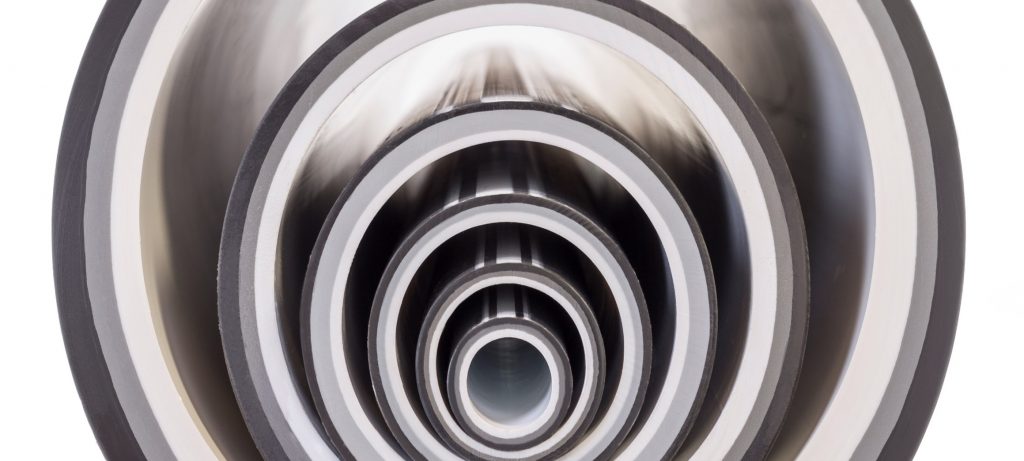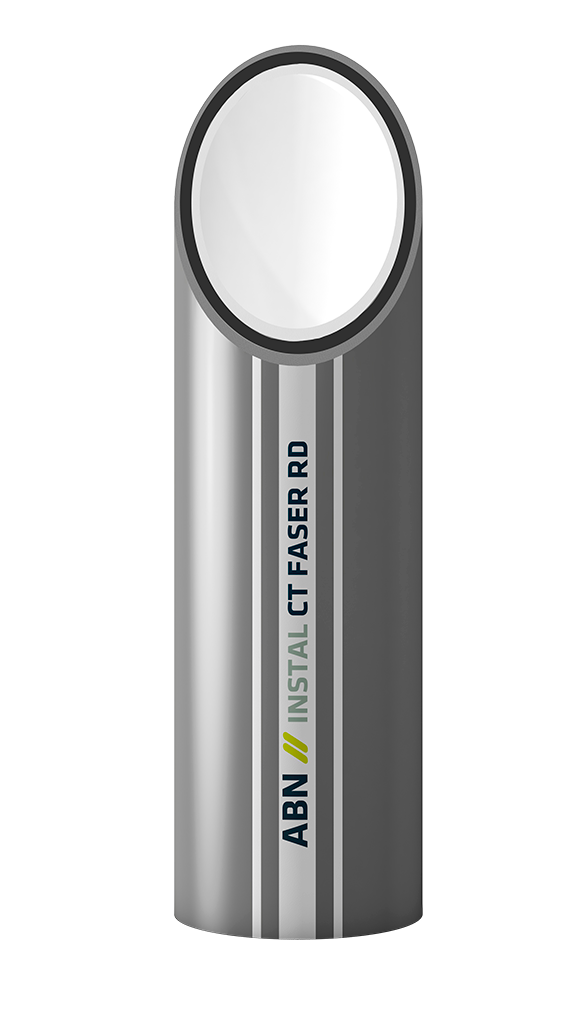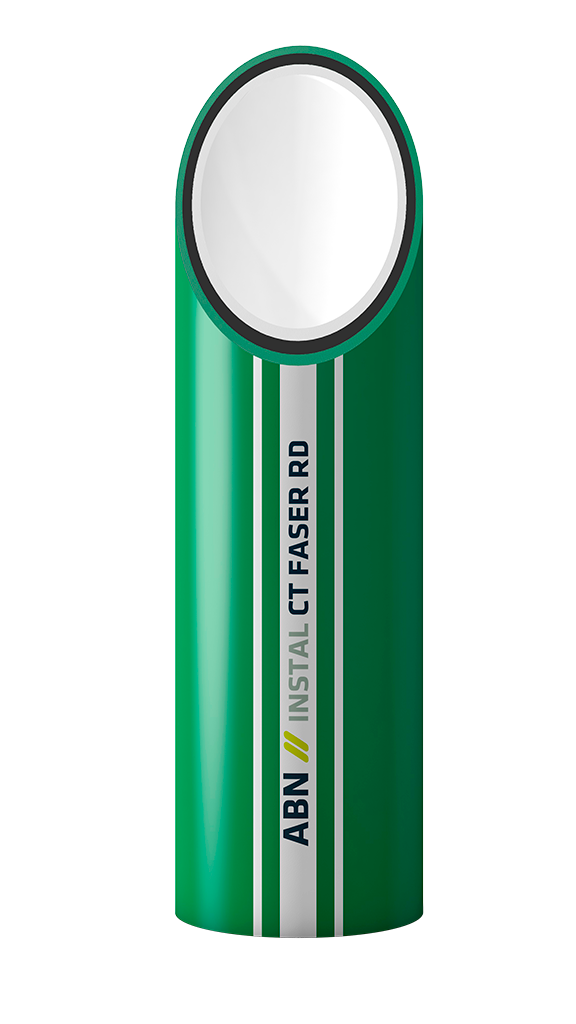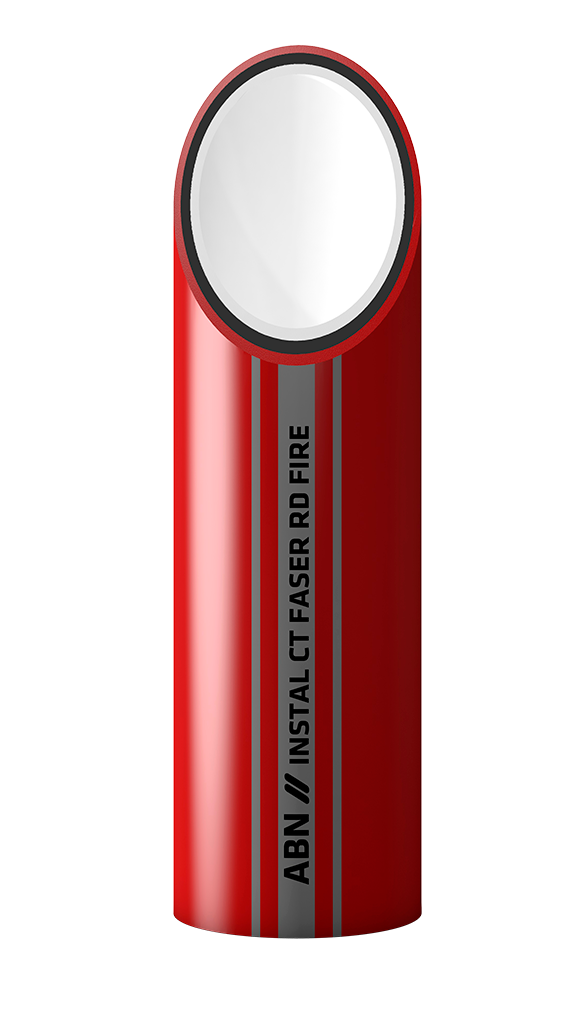Oxygen barrier piping
Designing and manufacturing innovative systems that provide added value, guaranteeing a sustainable future.

Plastic pipes and oxygen
Plastic piping systems are characterised by a certain degree of gas permeability.
Plastics, formed by long hydrocarbon molecules linked together, have cleavages throughout their physical structure. Their size allows oxygen molecules to pass through, so that a plastic tube exposed to the atmosphere is subject to diffusion of oxygen from the air from the outside to the inside. This permeability varies depending on the installation conditions (temperature and pressure).

What are the problems in closed circuits?
In closed heating and cooling circuits without an adequate oxygen barrier, oxygen permeation through the pipes can lead to a number of serious problems. Oxygen entering the system promotes corrosion of metal components such as valves, pumps and radiators, which reduces the lifetime of the system. In addition, the formation of sludge and rust particles blocks water flow, affecting energy efficiency and increasing maintenance costs. This can result in poor system performance and costly long-term repairs.
Oxidation of components
Sludge formation (magnetite)
Biofilm formation
Current problems with oxygen barrier systems
Despite the advantages of oxygen barrier pipes, some systems present technical difficulties. In many cases, the installation of multi-layered pipes can be complex, especially when the outer layer needs to be removed before joints are made, which increases the installer’s time and effort. In addition, some materials may lose their effectiveness over time, allowing gradual oxygen permeation. This raises concerns about the longevity and long-term effectiveness of closed systems.
Current systems with an anti-oxygen barrier using EVOH or aluminium have the following problems:
In PPR systems it is necessary to remove the barrier layer for welding.
The product is no longer recyclable and sustainable.
ABN anti-oxygen barrier
Our oxygen impermeable pipe systems maintain recyclability and sustainability by not including additional layers.
This new solution offers 2 main benefits over other oxygen barrier systems:
It is not necessary to carry out layer removal processes for welding.
The product maintains its recyclability and sustainability.
ABN productswith anti-oxygen barrier:
The largest range of diameters. From 20 to 500 mm!
TESTS
These systems have been tested for oxygen permeability according to DIN 4726 in the German laboratory MPA NRW, with excellent results.
The pipes have been tested at 40 ºCand 80 ºC.
Oxygen permeation test
| TEMPERATURE ºC | ABN// INSTAL CT FASER RD | DIN 4726 STANDARD |
|---|---|---|
| 40 ºC | <0,004 mg/m2.d | 0,32 mg/m2.d |
| 80 ºC | 1,955 mg/m2.d | 3,6 mg/m2.d |
MPA NRW tests
What differentiates us
No EVOH layer
Without EVOH layer (etylen-vinyl-glycol), so they can be welding by any procedure without having to remove it.
Aluminium free
The aluminium layer does not need to be removed, which avoids possible failures in the welding process.
We maintain recyclability
No EVOH layer, no aluminium, no adhesives means that the recyclability is maintained.
What benefits do we provide?
Prevents sludge, sludge and bacteria formation
Oxygen inside the hydraulic circuits leads to the formation of sludge, sludge and bacteria, causing damage to other components of the installation, such as valves, filters, boilers, etc.
Increases performance and efficiency
Corrosion of the water (sludge formation) leads to increased energy consumption.
Maintains recyclability
In contrast to other pipes on the market, the fact it doesn´t have an EVOH layer or Alumino layer means that they can be 100% recycled.
Avoid investment in specific tools
In these systems, the absence of a physical barrier layer does not require the use of specific tools for their removal.
Reduction of processes and manpower
The time required to remove EVOH or aluminium layers is eliminated.
Avoids possible errors in the welding process
Excessive peeling and non-removal of the barrier layer is avoided, ensuring thermofusion.
Application sites
Heating
Air conditioning
Geothermal
Fire fighting


